NYC’s Forgotten ‘War on Christmas Trees’
Discover how an obscure holiday crackdown affects festive street vendors today!


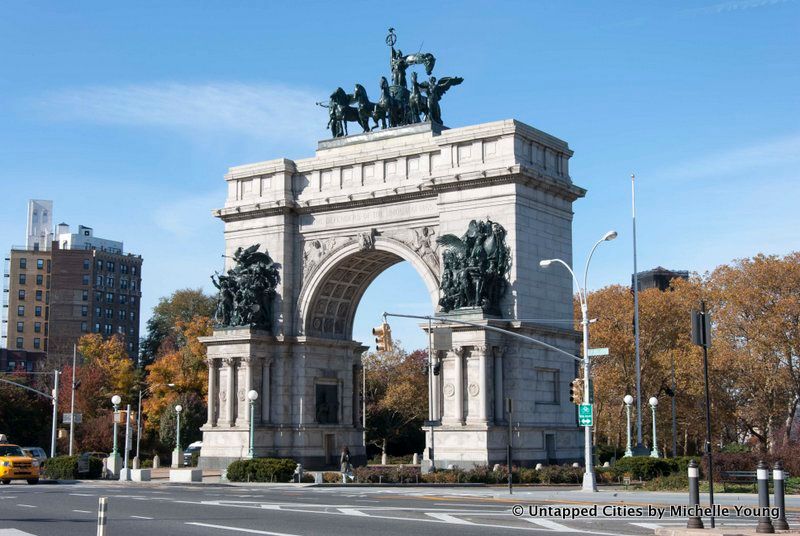
The interior and roof of the Grand Army Plaza arch was designed for public access but has been closed off.
Untapped Cities and numerous other individuals and organizations recently testified at the City Hall hearing “An Examination of Parks Department Properties Currently Inaccessible to the Public” led by New York City Councilman, Mark Levine, chair of the Committee on Parks and Recreation. These locations include whole islands, monuments within parks, pieces of infrastructure, and unused buildings. Here are ten of these locations discussed in the hearing.
In our testimony, we stated:
“The list of places being discussed today constitute some of the most popular topics on Untapped Cities, fascinating not only to the more vocal and visible urban explorer community but also more importantly, to every day New Yorkers who are interested in history and placemaking. Questions on how to access these places are some of the most frequent inquiries we receive at the publication, and while we have been privileged to have been able to visit several of these locations to document them, it is always with misgiving that we cannot say they are open to the public. We believe it is the right of all New Yorkers, as citizens of this city, to be able to access these properties under the parks jurisdiction. Openness in our society is more important than ever, both for residents and for visitors to New York. Public access to the city’s public places will help to promote a robust, engaged civic society and inform everyone about the city’s history and its built environment – and we hope that New York City can serve as a civic leader in this effort and serve as an example to other cities in this country.”
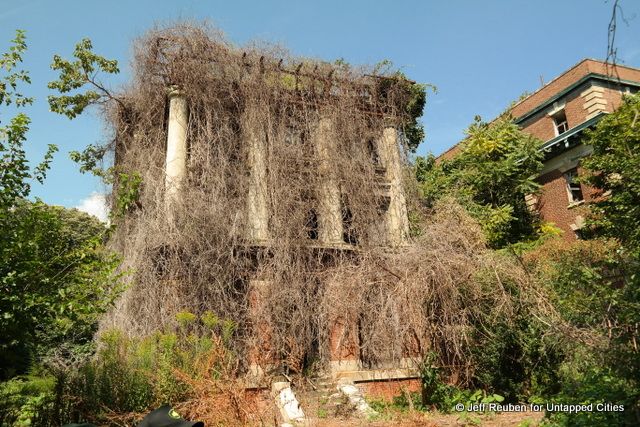
North Brother Island is probably the number one spot that New Yorkers hope to access. With its fascinating history as a quarantine site for infectious disease, location for post WWII housing and as a drug treatment facility, North Brother Island is additionally fascinating because its remnants show that a self-contained city once existed, replete with roads, power plants and beautiful, civic buildings. It has become an urban explorer paradise, but legal visits to North Brother Island have been infrequent and sometimes a surprise – like a NYC Parks-led canoe trip we attended that made an impromptu stop on North Brother Island.
In 2015, a study to examine the island’s possible reuse was initiated by Councilman Mark Levine in partnership with PennPraxis, under the direction of Randall Mason, chair of the graduate program in Historic Preservation at PennDesign and c0-author of North Brother Island: The Last Unknown Place in New York City.

Unlike the Washington Square Park arch (also on this list), Grand Army Plaza‘s Soldiers and Sailors arch was designed with an observatory open to the public. Until 2008, the arch also housed the museum of The Puppet Library. There is a spiral staircase inside and visitors could wander freely to take in the museum. But when the arch started leaking, the space was closed off to the public and the museum had to find a new home (it’s now on the campus of Brooklyn College).
To add to the confusion about its public access, the Wikipedia entry on the arch says that it is open to the public, but this is definitely not the case.

The Washington Square Park arch has so much history, we did a whole article just on its secrets. Next month on January 23rd will be the 100th anniversary of the famous incident when a group of artists, led by artists Marcel Duchamp, John Sloan and poet Gertrude Drick broke into the arch, climbed to the roof using the interior stairs and declared it the independent republic of New Bohemia.
The arch at Washington Square Park, designed by Stanford White, was built following the construction of a temporary arch out of wood, to mark the centennial of President George Washington’s inauguration. The arch was so popular, a campaign was started for the construction of a permanent one.
The interior space and roof of the current arch were not designed for public access, but there has been a NYC Parks office inside the arch in the past. There have also been a few rare moments of access for press and other insiders, including a live Periscope video stream last year. We shared a reader’s photos from inside the arch just this year. The NYC Parks Department spokesperson maintained at the hearing that the interior and roof are not structurally sound enough for public access, but Moses Gates of the Regional Plan Association pointed out in his testimony at the hearing that the renovation to the arch in the 2000s notably did not include plans for public access.
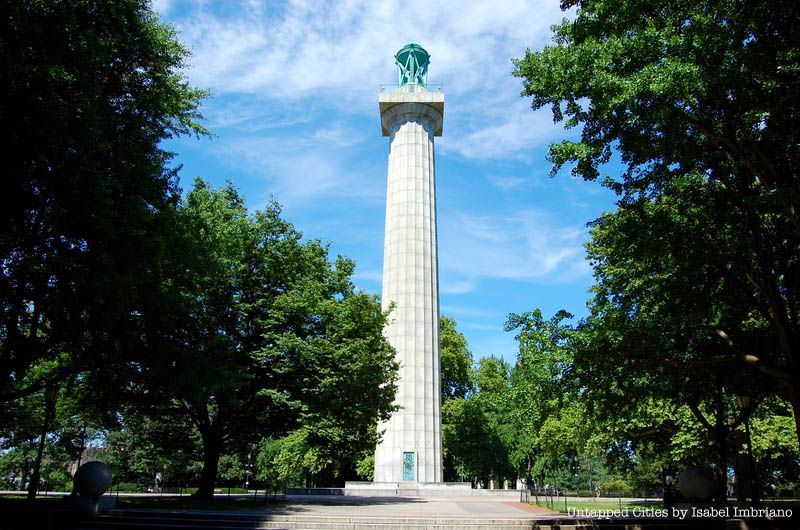
The Prison Ship Martyrs Monument in Fort Greene Park sits on a crypt that contains the remains of soldiers who died on British war ships in Wallabout Bay during the Revolutionary War. When originally constructed, the monument had stairs and an elevator to the top which was accessible for a dime. Today, the monument interior is off-limits to the public except for a few times a year through select organizations, and even then, does not provide access to the top or too far inside.
The crypt beneath the monument that contains the martyrs is also closed to the public, but if you do wish to visit inside the monument, The Society of Old Brooklynites hosts visits once a year but you have to be member of the society to enter. The only requirement is that you have to have lived or worked in Brooklyn for the past 25 years.
As you can see from the photograph below, accessing the top today is precarious as there’s just a simple ladder but efforts could be done to reintroduce original means of access:
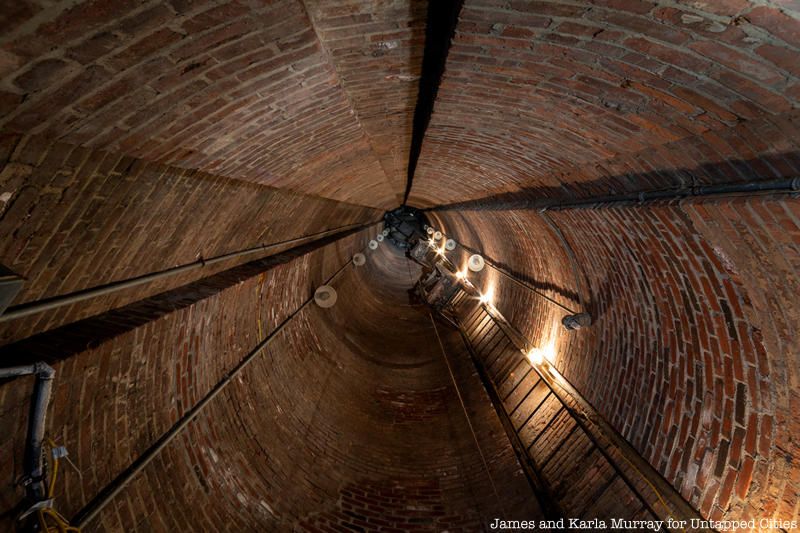

The Soldiers and Sailor’s Monument in Riverside Park was originally conceived to be located in Grand Army Plaza at 59th Street and 5th Avenue, on the south side of Central Park. The current site in Riverside Park was finalized in 1899 and the structure was dedicated in 1902. The monument is a New York City landmark, but is only open on certain occasions. Open House New York weekend is one of the primary opportunities to see the inside.
The Riverside Park Conservancy granted interior access to the New York Times last year, in an effort to raise awareness about the $500,000 needed for a structural study on the memorial’s interior.
 Attic space in the interior of High Bridge. Photo courtesy of Alyssa Loorya.
Attic space in the interior of High Bridge. Photo courtesy of Alyssa Loorya.
The construction of the Croton Aqueduct was a major engineering and public health initiative, celebrated with a fountain display at the fountain at City Hall Park. There are many remnants of the Croton Aqueduct system throughout the city (and upstate), but of prime importance to this issue are the elements on High Bridge, the oldest bridge in New York City and a former aqueduct.
In 2015, High Bridge itself was transformed into a new pedestrian crossing between the Bronx and Manhattan, it is still important to note that elements of its infrastructure that could provide a better historical and scientific understanding of the system are still off-limits to the public. This includes the hidden attic spaces on each end of High Bridge, which we previously showcased, which give an inside look into how the aqueduct is constructed. This space also still bears historical graffiti from the Works Projects Administration era.
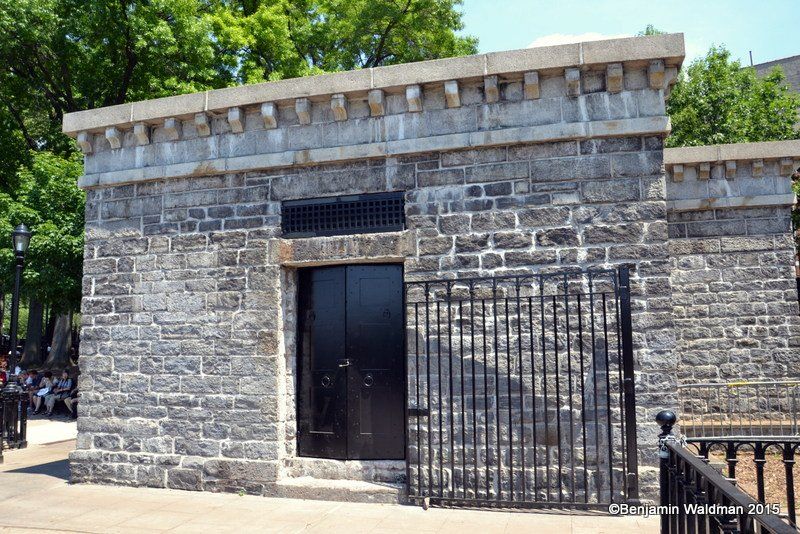
The gatehouses on High Bridge, which feature beautiful brick barrel vault construction on the interior, are additional inaccessible assets along this thoroughfare. As the website Croton Waterworks describes, the water once entered through the eastern gatehouse on the Bronx side and was dispersed through the western gatehouse on the Manhattan side. The western gatehouse has undergone a structural study in the past to address the significant distortion of the vaulting inside. The gatehouses are actually under the jurisdiction of the NYC Department of Environmental Protection at present.
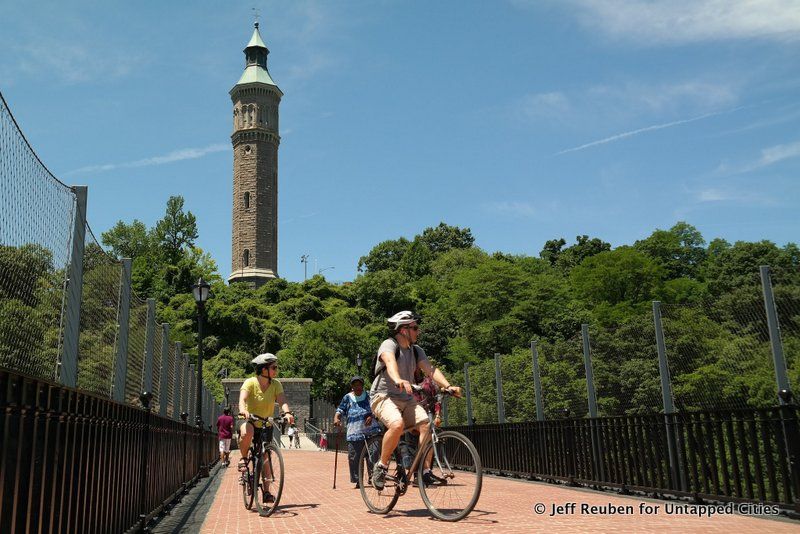
Like many other elements of High Bridge, the High Bridge Water Tower is also inaccessible to the public. While built for a functional purpose – to pump water into a 47,000-gallon that could service the higher elevation areas of upper Manhattan – it was also designed, in a distinctive architectural style, to be a local landmark. An electric carillon was added in 1958 and bells rang from the top for a period of time. Untapped Cities writer Jeff Reuben, who covered the water tower on this site previously, argues that this was possibly an early attempt to repurpose the water tower.
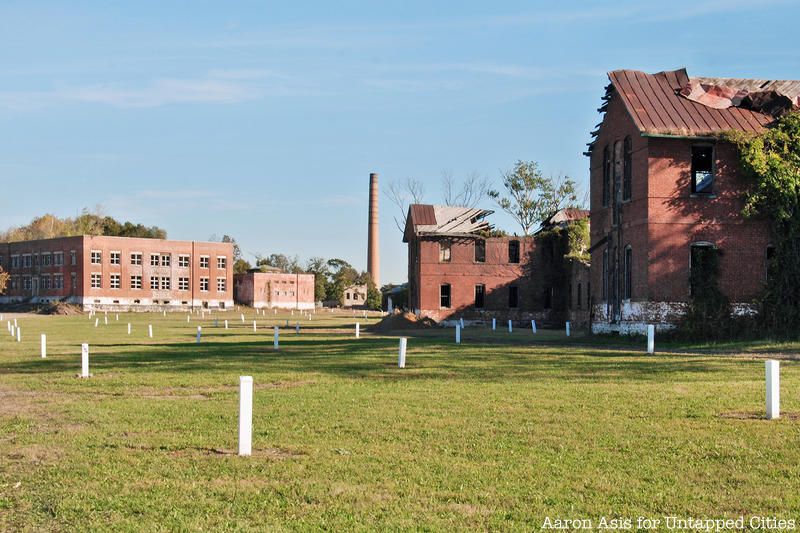
One of the most contentious items at the hearing was a site that is not actually within NYC Parks jurisdiction, but many advocates feel it should be. Hart Island, the city’s mass burial ground or potters field, is managed by the NYC Department of Corrections and staffed by the inmates at Rikers Island, who bury the dead. Access issues for families of the dead have prompted some reforms in recent years, led by activism from the Hart Island Project, but the strange confluence of jurisdictions makes this location, the largest publicly funded cemetery in the world, a bizarre place for bereavement.
Testimony from family members at the hearing was harrowing. One military veteran lost her child at birth and the hospital subsequently lost the body. It took thirty years for her to locate the burial site in a trench on Hart Island. Another testimonial spoke to the number of persons with AIDS who are buried here, a forgotten chapter in the history of HIV and AIDS untold at the recent AIDS Memorial unveiling.
Hart Island also has a history of other uses, as a military base, as a drug rehabilitation facility and more. The active burial grounds on Hart Island are only a small portion of the 101 acre island, so supporters for reuse argue that the rest of the island can be converted into memorial and public space. For the general public now, access can be granted one Thursday a month through application with the Department of Corrections. See our documentation of our visit there this year.
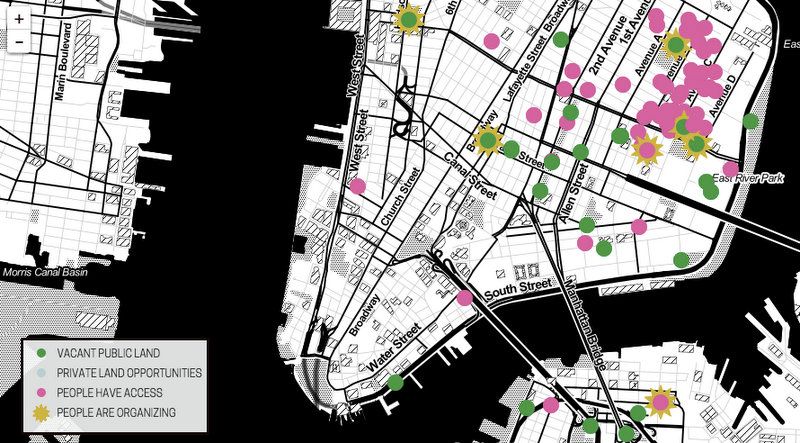
According to testimony by the nonprofit 596 Acres, their volunteers have uncovered 35 vacant public NYC Parks buildings, and 27 places in New York City where land in the inventory of the NYC Parks Department is idle and inaccessible. That could potentially be a large number of neighborhood parks, community centers, and public bathrooms in the future.
Next, check out the Top 10 Secrets of North Brother Island.

Subscribe to our newsletter